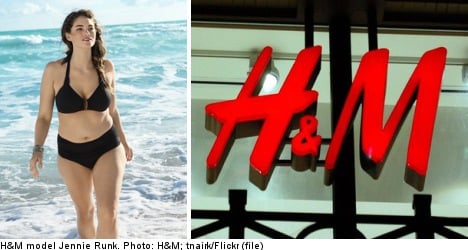In an interview published on Tuesday in the Metro newspaper, H&M CEO Karl-Johan Persson said the Swedish fashion retailer was in the spotlight when it came to trends in model sizes.
“There are many models who are too thin and underweight, but there are also those who are just thin, and we will continue working with them as long as they look fresh and healthy,” he said.
“I think we have a huge responsibility. We are a big company, there are many people who see us, and I don’t think we have always been good. Some of the models we’ve had have been too thin. This is something we think about a lot, and something we’re working on.”
When asked what would happen if H&M were to take the lead and try to influence other companies to use plumper models, Persson was unsure if such an approach would work.
“It’s hard to say. It’s possible that we can be on board and make a change, but it really is such a big industry,” he told the paper.
H&M has been praised recently for its use of a plus-sized model, Jennie Runk, in this season’s swimwear campaign. Runk, a size 12, has drawn admiration from supporters around the world for her fuller figure, although H&M denied it was making any statement by choosing to showcase a larger model.
However, the Swedish company’s marketing tactics have not always been appreciated. In May last year, the company was forced to apologize for using a deeply tanned model in a bikini after cancer groups slammed the ads as creating a “deadly beauty ideal”.
Debate in Sweden about the use of thin models erupted again earlier this spring following reports that one recruitment agency allegedly even “hunting” for potential models outside an anorexia clinic in Stockholm.
Elsewhere on H&M’s radar, Persson explained in Tuesday’s interview that the company is working on improving conditions in Bangladesh following the factory collapse in May that killed more than 1,000 garment workers.
The Local/og


 Please whitelist us to continue reading.
Please whitelist us to continue reading.
Member comments